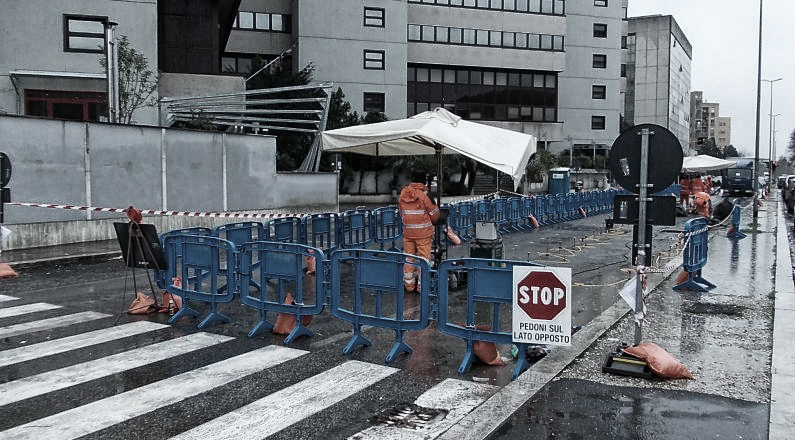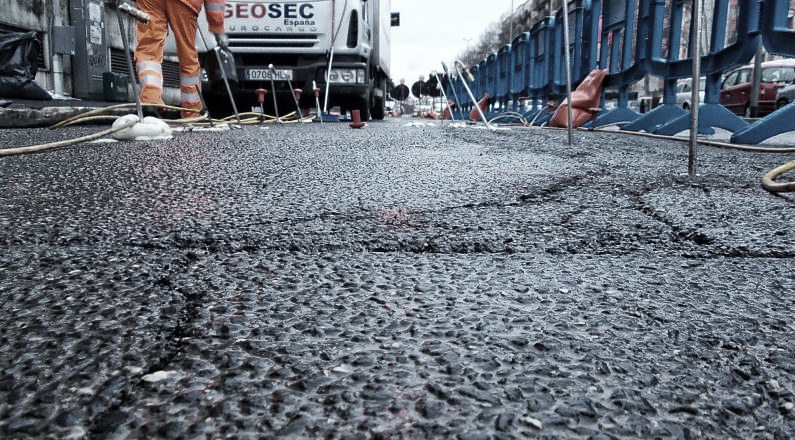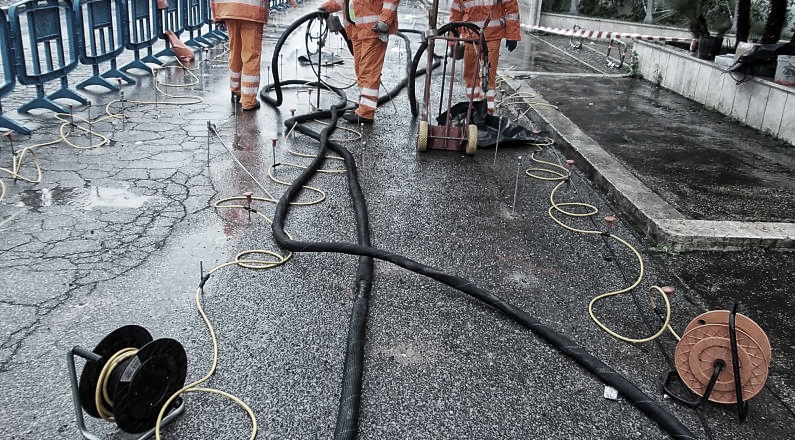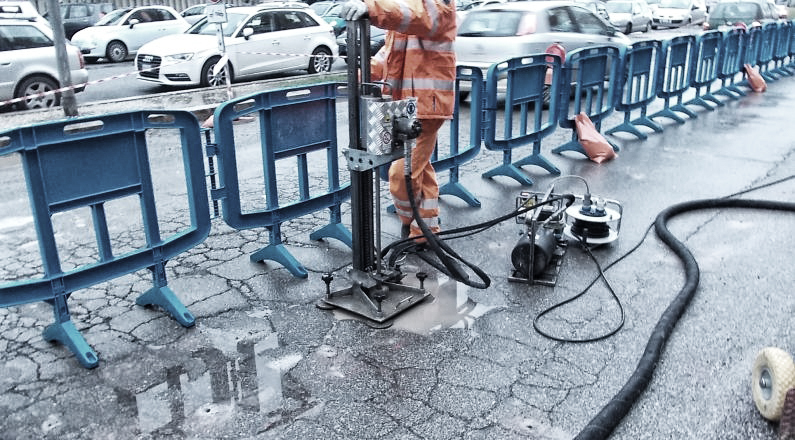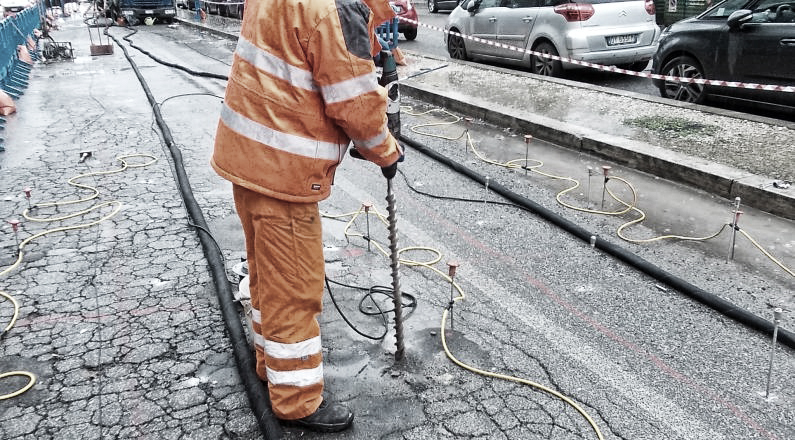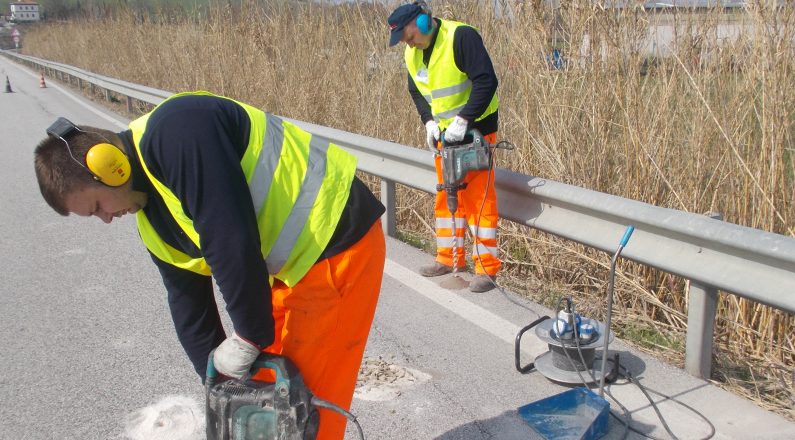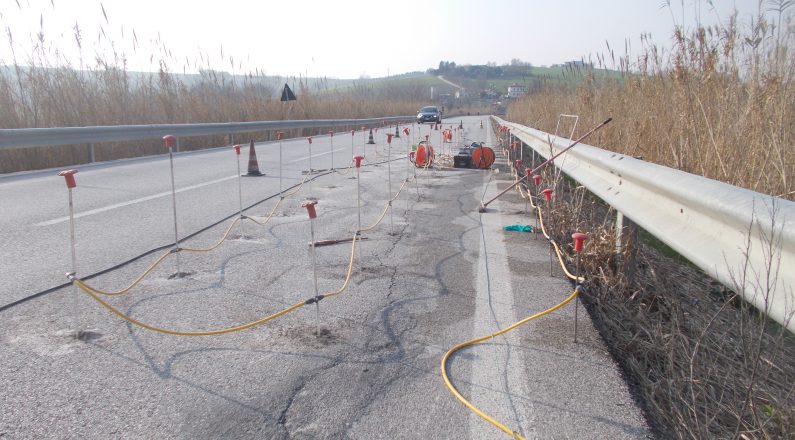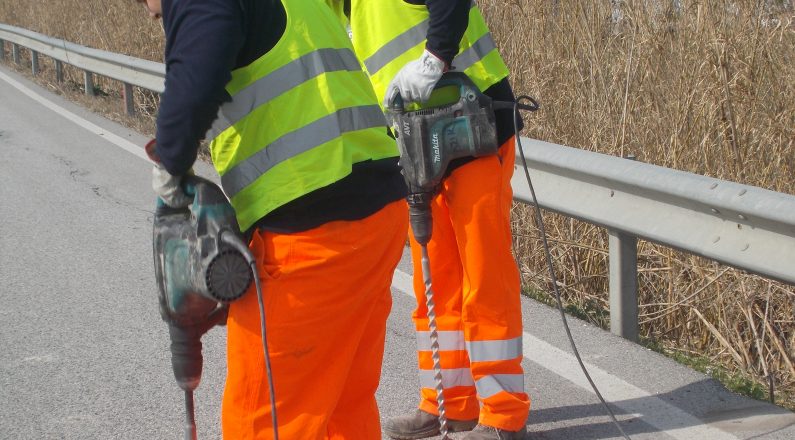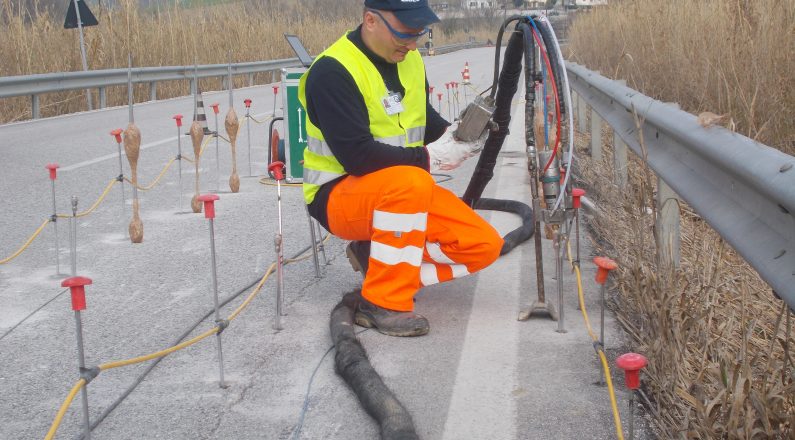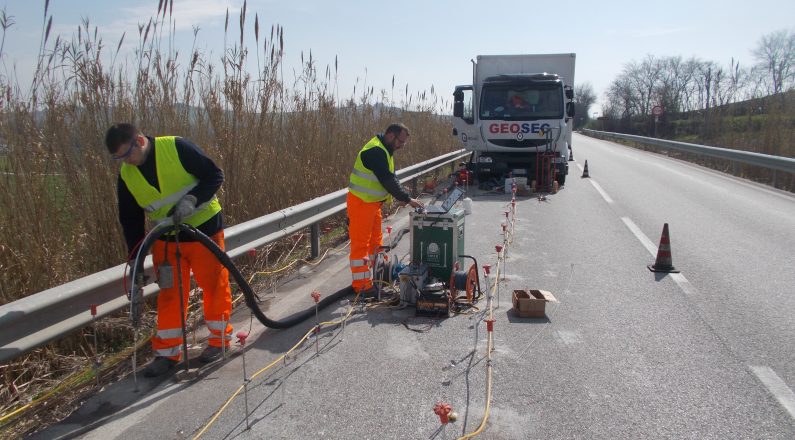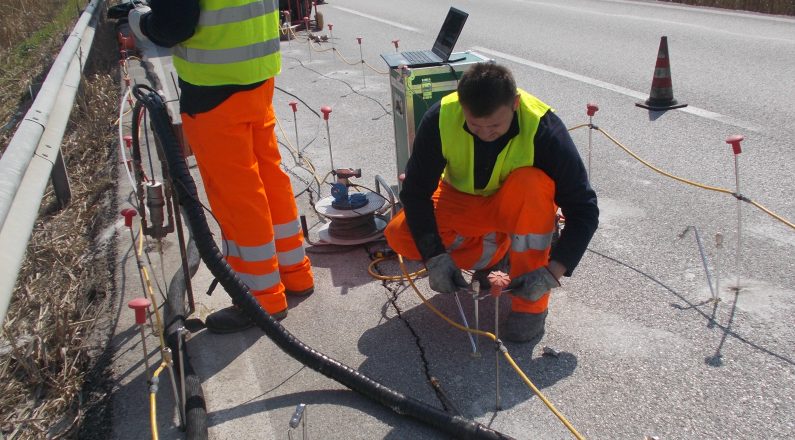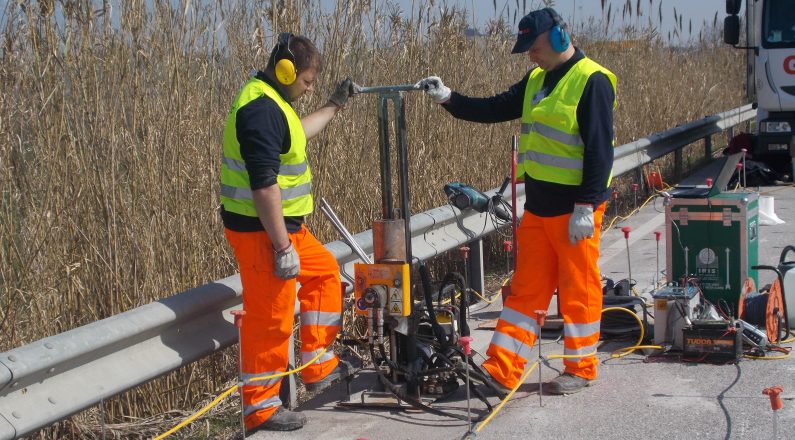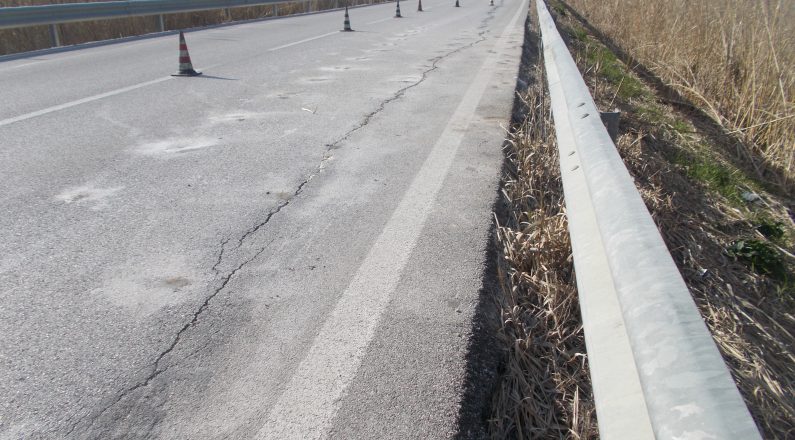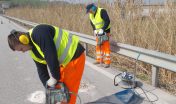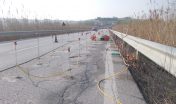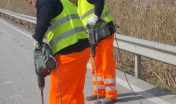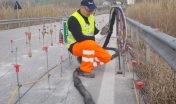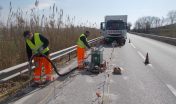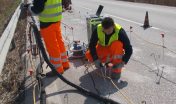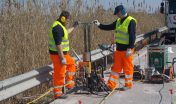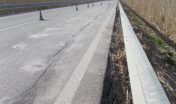SOIL STABILISATION
INNOVATIVE SOLUTION FOR RAPID ROAD SURFACE MAINTENANCE.
SOIL STABILISATION is the GEOSEC® method for consolidating flexible or semi-rigid road surfaces. Wearing course cracks and depressions are only the last sign of load-bearing capacity issues affecting the road base and subgrade which no longer guarantee an adequate level of safety and economic feasibility of the infrastructure. The SOIL STABILISATION method is the modern solution for fast, minimally invasive maintenance to improve compaction of the subgrade below a subsided road surface, reducing voids and ensuring a better binding action of the materials.
Operating procedures for consolidating road surfaces
This method allows immediate reuse of the infrastructure as soon as the treatment has been completed and without the need for complementary support works, except for normal maintenance of the already cracked bituminous wearing course. The procedure involves injecting GEOSEC® eco-friendly expanding resin into both the soil-subgrade interface and the subgrade-base interface.
A special, eco-friendly, closed cell expanding resin of suitable density and elastic modulus is gently injected through small bores (diameter between 6 and 25 mm) into which small metal tubes are inserted to facilitate the injection of the resin. The drilling layout is generally 1.00 x 1.00 m. Each operation is planned by GEOSEC® expert personnel qualified to operate on road construction sites, taking into account site conditions and possible operating scenarios (obstacles, presence of underground and/or hidden utilities, thickness of road surface, vehicular traffic, etc.).
During the consolidation work, constant monitoring as the road surface begins to lift is guaranteed using millimetre-accurate receivers and laser levels. The depth of injection beyond the subgrade, especially in the presence of very high operating loads, can be implemented using the SEE&SHOOT® method as described in the section dedicated to expanding resin injections.
In accordance with the most rigorous method of application of this solution, further instrumental investigations can be carried out on site using:
- Ground Penetrating Radar (GPR) for analysing the stratigraphy;
- Coring for analysing the stratigraphy and materials;
- Deflectometric tests using a Heavy Weight Deflectometer (HWD) for precise analysis of load-bearing capacities;
- Electrical resistivity tomography investigations to search for voids and fluid infiltrations under the road surface.
Based on the results obtained, the map of operations can be dimensioned with adequate precision. Furthermore, thanks to intermediate and/or final repetition of the same tests, it is possible to verify the achievement of the desired results and compliance with good engineering practices and the project requirements.
Video
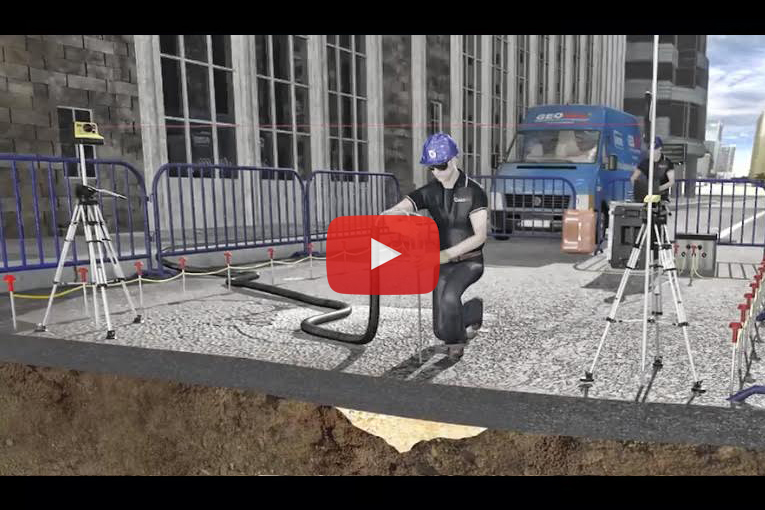
SOIL STABILISATION operational procedure
The procedure used to consolidate the base and subgrade of road surfaces involves the following phases:
Survey phase:
- Identification of areas which have not subsided;
- Positioning of lift gauges;
- Optional on request: execution of site surveys as described above.
Preparation phase:
- Drilling of an array of injection bores in the subsided road surface;
- Insertion of disposable injection tubes.
Injection phase:
- Injection of the expanding resin in each individual bore;
- Real-time monitoring of the lift achieved;
- Optional on request: verification by on-site investigation of the results obtained.


